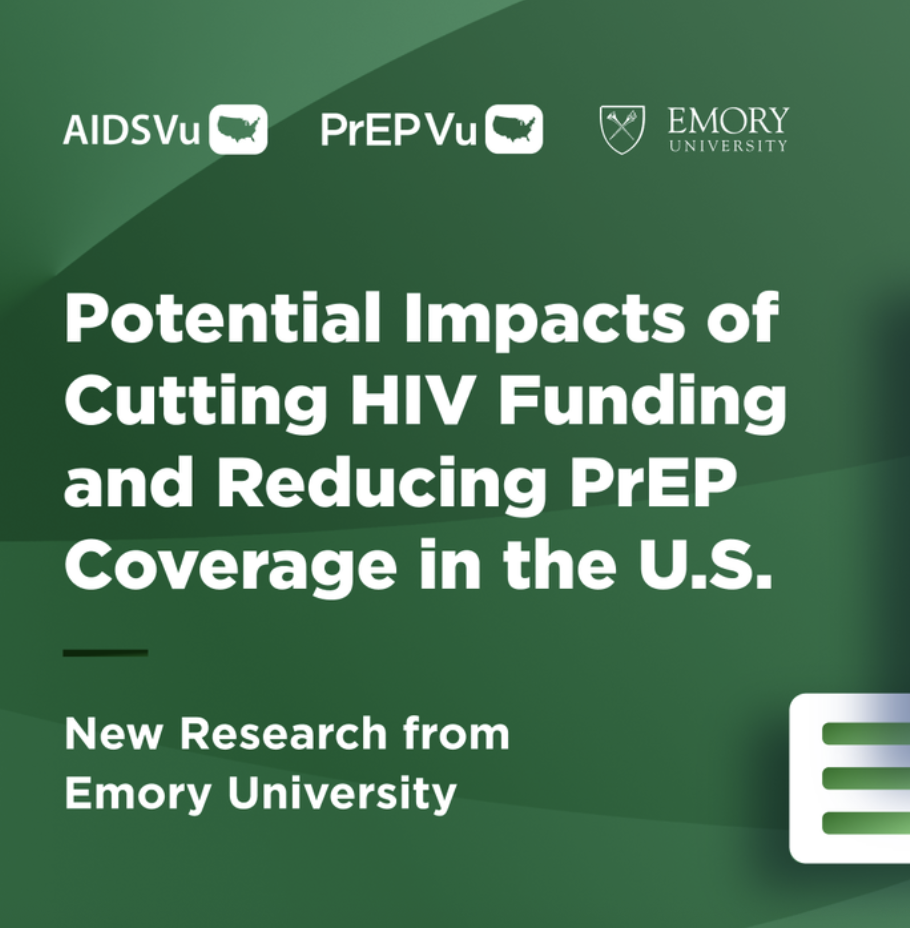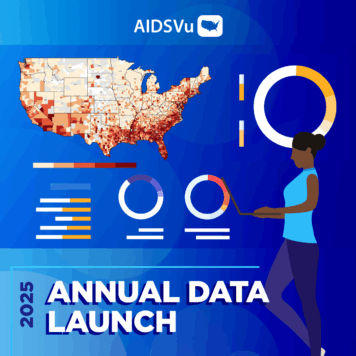For many years, the HIV surveillance system has been “the conscience of the epidemic” and data on case counts and rates have been the most objective measures of our challenges and our successes in responding to the epidemic. However, not all population disparities have been treated equally (or quantified) by the data, particularly the 58% of people living with HIV who are gay, bisexual, or other men who have sex with men (MSM).
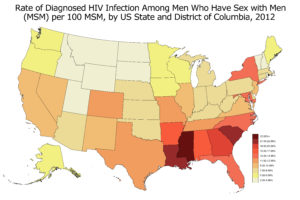 To address this gap in data, researchers at Emory University’s Rollins School of Public Health and the U.S. Centers for Disease Control and Prevention (CDC) used a new method to estimate the numbers of MSM in every state, county, and metropolitan statistical area (click here for the paper). With sub-national MSM population estimates
To address this gap in data, researchers at Emory University’s Rollins School of Public Health and the U.S. Centers for Disease Control and Prevention (CDC) used a new method to estimate the numbers of MSM in every state, county, and metropolitan statistical area (click here for the paper). With sub-national MSM population estimates
now available for the first time, Emory conducted additional analyses using these new estimates and AIDSVu data to generate rates of HIV prevalence and new diagnoses (click here for the paper).
The research found that HIV infection is “hyperendemic” among MSM in many areas of the U.S.: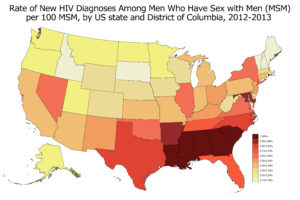
- In most states, about 1 in every 10 MSM (11.1% nationwide) are living with diagnosed HIV.
- Rates are much higher in many Southern states; in Louisiana, Mississippi, and South Carolina at least 1 in every 5 MSM are living with diagnosed HIV.
- 21 of the 25 metropolitan statistical areas (MSAs), with the highest MSM HIV prevalence are in the South.
- These regional findings extended beyond urban areas; more than 30% of MSM in some rural southern counties are living with diagnosed HIV.
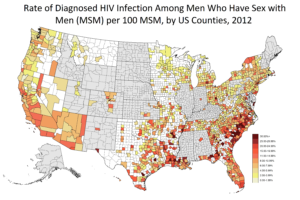 These new estimates could help shift our response to HIV prevention by:
These new estimates could help shift our response to HIV prevention by:
- Allowing for the calculation of disease rates among MSM, which gives researchers the opportunity to more effectively quantify the disparate impacts of HIV among MSM across states, counties, and MSAs.
- Aiding public health practitioners and policy makers to better determine the burden of HIV and STIs among MSM in local contexts, which could aid in more efficient resource allocation, intervention development, and service delivery.
- Helping organizations to incorporate the goals and indicators from the National HIV/AIDS Strategy (NHAS) into their local program plans, specifically, the NHAS goals of reducing new HIV infections (Goal 1, Indicator 2) and reducing HIV-related health disparities for MSM (Goal 4, Indicator 9).
For more information on how authors used AIDSVu data to calculate new HIV rates for MSM, click here.
To access the paper on estimating population sizes of MSM, click here.
To access the paper on using new MSM population estimates to generate rates of HIV prevalence and new diagnoses, click here.
Dr. Sanchez is Research Associate Professor at Emory University’s Rollins School of Public Health and the AIDSVu Project Director.


